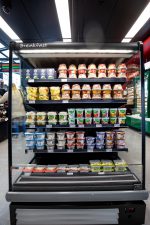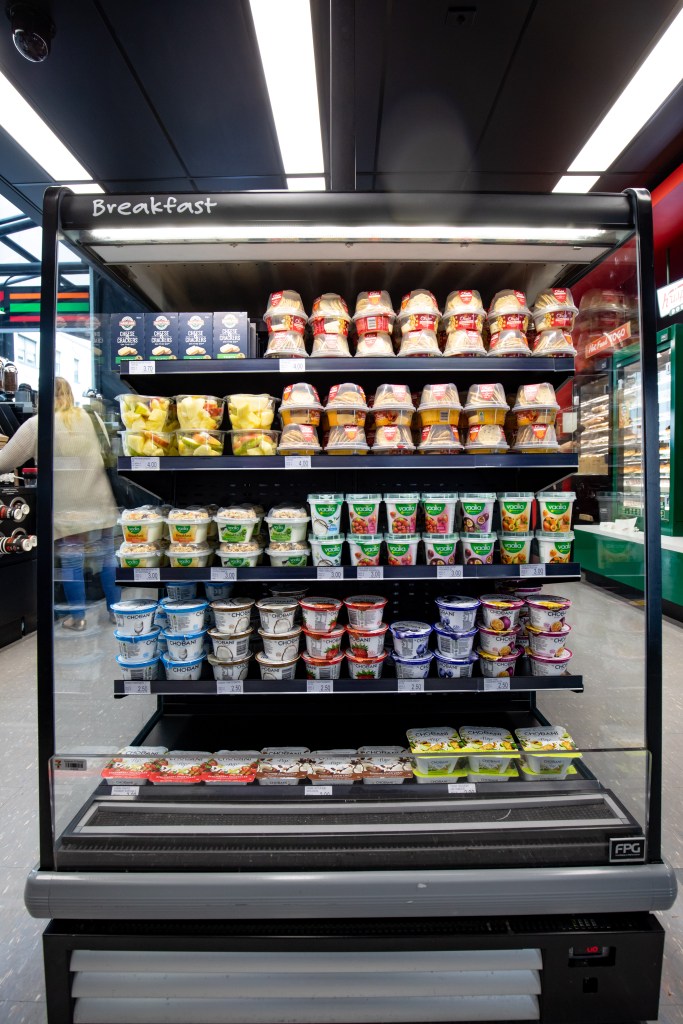 Healthy snacks are rising in popularity and brands are taking advantage of this trend
Healthy snacks are rising in popularity and brands are taking advantage of this trend
As health concerns rise, consumers are continually turning their backs on sugar-laden sweets and oily snacks. However, needing to stop at a convenience store during a trip for petrol or food means that consumers will be on the hunt for something nourishing they can eat.
Consumers are expanding their eating habits to include healthier options and brands are taking advantage of these opportunities.
According to InsideFMCG, companies are aware of the health movement and strive to meet the demand for transparency and clean eating.
“A clear example of this is Hershey’s, Nestlé’s and Mars’ response on pledging to remove artificial ingredients and improve transparency,” it said.
“Healthy snacks are emerging as a quick refuel for time-poor consumers.”
“Contributing factors also include longer working hours, the rise of single urbanites and emotional eating.
“Besides nutrient-dense and all-natural snacks, functional ingredients with health benefits are also expanding across all categories.”
An IRi shopper survey found 62% of Australians said that nutritional information displayed on the packet affected their purchasing habits; 53% of shoppers said they had or were planning on changing an aspect of their diet.
IRi’s channel insight manager Daniel Bone said there was a consumer and cultural shift towards health and wellness being driven by three distinct consumer segments including grocery, petrol and convenience and pharmacy.
<sub-heading> AACS Report
According to the Australasian Association of Convenience Stores (AACS) 2017 State of the Industry (SOI) Report there is a movement away from “the traditional three meal routine per day” and is instead “going towards frequent grazing/snacking”.
However the AACS SOI report said the dollar growth of snackfoods was 2.1% in 2017 and had dropped from 5.7% and 6.9% in 2015 and 2016 respectively.
“This amounted to $4 million in additional sales revenue,” the report said.
“The snackfoods category has become a symbol of how the channel is providing a more balanced product mix to satisfy both customer needs of health and indulgence.
“Nevertheless, the $194 million category – consisting of chips, nuts, popcorn, nutritional bars, dried fruit, and pretzels – slowed in 2017.”
The SOI Report also noted that nutritional bars and nuts recorded robust growth, +13.8% and +7.5% respectively.
“Good/better-for-you snacking options recording such robust growth is evidence of consumers utilising snacks to get the nutritional boosts they need throughout the day,” the report said.
<sub-heading> Growth in-store
A spokesperson from Lion Diary and Drinks said in order to continue growing sustainably, c-stores must seek to increase shopper conversation and grow each transaction size.
“In order to solve for the first challenge, we first need to understand some of the key reasons why shoppers are rejecting convenience’s retail offer,” the spokesperson said.
“Our research highlights that 65% of shoppers are not satisfied with the healthy snacking options for adults in our channel, while 30% state that it is difficult to find a healthy offer in a convenience store.1 Hence, providing a range of naturally nutritious snacks can better satisfy our shoppers, thereby driving better conversion rates.
“Thus, it is evident why better-for-you snacking solutions such as fresh fruit, yoghurt, protein balls and muesli have recently been ranged in many convenience banners and are predominantly merchandised in highly visible off-location displays.
“Given that the average transaction size in the convenience channel is only two items, in order for solve for the second macro challenge we need a solution that can grow basket size.2 This can be successfully executed through providing a permanent combo-promotion, which combines a main meal with a beverage and a snack in similar vein to successful combos run in competing channels. With studies finding that 1 in 3 people are regularly eating breakfast on the go3 due to time pressures, portable breakfast options are becoming increasingly important, especially since customers value the consideration of taste and nutrition when picking up breakfast on the run.
“Hence, as many shoppers are looking for healthy breakfast on-the-go solutions, providing a nutritious breakfast solution in convenience stores can help solve this 2nd challenge to grow basket size to 3 items.
“So, what product categories can we better leverage to solve these two challenges? At Lion Dairy and Drinks, we believe that the yoghurt category can play a critical role in addressing both conversion and basket size. Yoghurt is a household staple, with 9 out of 10 Australians already purchasing yoghurt, primarily for a snacking occasion. However, the impulse channel has been missing out on the yoghurt opportunity since there has been a lack of convenient formats for consumers.
“Recently launched product innovation Farmers Union Greek Style Yoghurt pouches offer the distinctive taste that Farmers Union yoghurt fans love, with the convenience of an easy to carry and consume pouch pack. This latest evolution echoes consumer demand, with 75% of consumers stating that they would buy more on the go snacks if options available contained less added sugar, were more nutritious and less processed.3
“Moreover, consumers are seeking out creative combinations when it comes to their snacking selections. Arriving in convenience stores in September, Farmers Union yoghurt + crunch is a nutritious option that combines the classic taste of Farmers Union Greek Style Yoghurt paired with delicious additions such as nuts, seeds, and fruits. Complete with a spoon inside, this offer can also provide your shoppers with a nutritious, convenient snacking solution!”
A variety of options
According to IRI Worldwide, across the channel there is a range of options within the category of healthy snacking including popcorn, nutritional snacks, organic products, protein balls and nuts.
Insights from IRI
- Popcorn, a perceived ‘better-for-you’ option, is now worth 5% of snacks (which includes chips, nuts, pretzels, nutritional bars and dried fruit).
- Nutritional snacks (including museli bars, energy bars, protein balls) are now worth 19% of all snacks, in strong double digit growth (+12%), led by Youfoodz, Optimum Nutrition Protein Stix, and Fulfil.
- Organic products and snacks made from vegetables saw a -7% reduction in range, and a double digit decline (-42%) following triple digit growth (+143%) the year before. It seems that whilst these snacks are doing well in Grocery (+50% dollars MAT to 01/04/18), they are not being supported in Convenience in the same way.
- Protein balls have seen strengthened double digit growth (+34% MAT to 16/07/17, +57% MAT to 15/07/18), now worth 3% of all snacks, a trend we expect to continue.
- Products featuring nuts and/or cacao now account for $7 in every $100 spent on snacks. Growth has slowed significantly (+25% MAT to 16/07/17, +2% MAT to 15/07/18), but this is likely to be the ‘normal’ growth rate, pending more investment from the retailers to increase the range.
- Look out for other trending styles which are naturally good and promote wellbeing coming through in the channel, such as the Icelandic yoghurt skyr, which is high in protein but virtually fat free.
Insights from Convenience Measures Australia
- Healthy Snacks have increased penetration of total snacking category by 27% in 2018
- Highest basket penetration of Healthy snacks is between 6 and 11am
- 19% of Healthy Snack Shoppers buy more items than planned more than double the channel average

